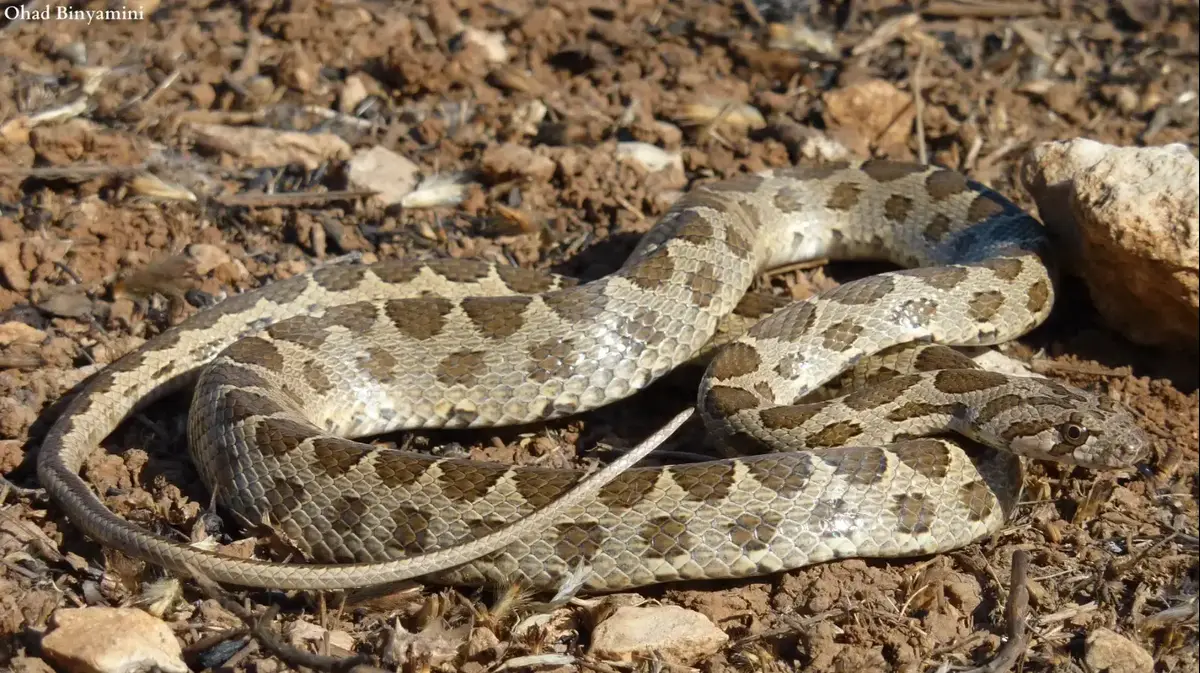Enlarge image
California chain snake, here in a terrarium: As an invasive species, it can cause considerable damage outdoors
Photo:
IMAGO / imago stock&people
On the Spanish Canary Island of Gran Canaria, an introduced snake species has almost wiped out the native reptiles.
The snake had found its way to the island by the end of the 1990s at the latest.
In the meantime, the California chain snake has become a regular guest there, it has spread, multiplied at breakneck speed and, as a so-called invasive species, has caused considerable damage.
After several finds in Baden-Württemberg, among other places, experts are now warning of the snake species.
There are bans, hobby breeders have to reorient themselves.
Is the green lizard in danger?
Most recently, two specimens of the approximately one and a half meter long snake were discovered near Offenburg and Freiburg.
The Californian chain snake, as a non-native species, could primarily endanger the stocks of the green lizard on the Kaiserstuhl and the sand lizard, fears Hubert Laufer from the Association for Amphibian and Reptile Biotope Protection Baden-Württemberg (ABS for short).
more on the subject
Invasive Animal and Plant Species: Here to stay
Invasive spider species in Ireland: »false widow« captures and eats sheltered bat
At Aldi: Australian couple find poison snake in salad
This adder is known to experts under the species name Lampropeltis californiae, but it is actually native to Mexico and the southwestern United States.
She is considered a skilled hunter and preys on birds, small mammals and lizards.
In their natural distribution area, other snakes are also on the menu, says Laufer: "The prey is strangled and then swallowed whole."
It is unclear whether the chain snake will survive in Germany in the long term and whether it might even be able to reproduce.
"With the climatic changes that can be observed, it would be quite conceivable that it is sometimes even warmer here than on the Canary Islands," says Laufer.
"If you ban this snake, you could do the same for a number of other animals."
Reptile researcher Axel Kwet
Phillip Haubrock from the Gelnhausen site of the Frankfurt Senckenberg Research Institute also thinks this is possible: "Considering that this species is widespread in European terrarium keeping, I wouldn't be surprised if we heard about such finds more often," he says.
Due to the size and rising energy prices, owners could release their animals without consideration.
However, the Senckenberg scientist does not expect rapid spread.
Individuals of this species only become sexually mature after a few years, and the currently relatively cold German winter still gets in their way.
The dark brown, yellow-striped California chain snake has been on the Union list of invasive species since early August.
There is a EU-wide ban on trading and breeding them, but owning existing animals is not prohibited.
They are harmless to humans.
Reptile researcher Axel Kwet considers the move to be exaggerated and incomprehensible.
"So far, the spread has only been intensive on the Canary Islands," says the managing director of the German Society for Herpetology and Terrarium Science (DGHT).
"If you ban this snake, you could do the same for a number of other animals." Many responsible hobby breeders are now losing interest in the reptiles, which are popular as "beginner snakes" and easy to keep.
High costs from invasive species
However, early action to prevent the spread of similar species can be worthwhile - not just for the local wildlife.
Together with other researchers, Senckenberg scientist Haubrock investigated the costs incurred by invasive species and how these could be prevented.
The expenditure for measures since 1960 has been around 84 billion euros worldwide, as explained in the study in the journal "Science of the Total Environment".
In the same period, this would be offset by damage from losses in agriculture and forestry, from infrastructure or from the burden on health systems of at least 976 billion euros.
"By the time we recognize the effects of invasive species on the environment, they are often already established and widespread," warns Haubrock.
However, it is difficult to convince investment decision-makers against something that is not yet a problem.
From Haubrock's point of view, there is also a lack of a broader understanding among animal owners of the dangers emanating from "biological invasions": "This should be started in schools."
mamk/dpa









